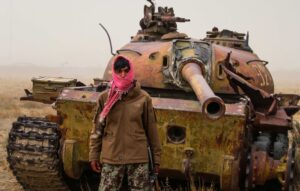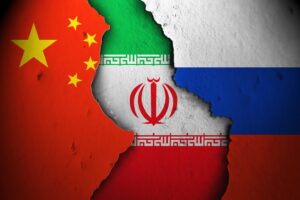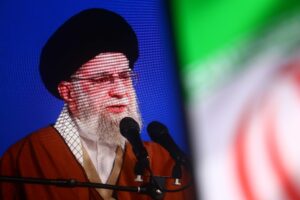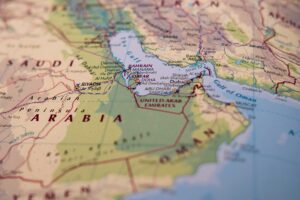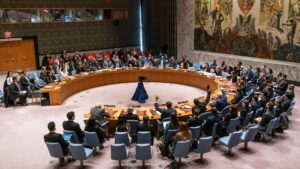ISIS: The Resilient Insurgency
Despite ISIS’ loss of territorial control over its so-called Islamic Caliphate and the international community’s concerted effort to eradicate it, the group has proven resilient to total defeat. It has shown a remarkable ability to adapt. This resilience can be attributed to several factors, including the organisational capabilities of ISIS, the persistence of the conditions that led to its emergence, the existence of conflict zones and fragile states in different regions, and competing interests that divert the attention of nation-states away from their commitment to defeat ISIS.
To understand why ISIS has been able to survive [...] it is crucial to examine the conditions that enabled the group’s emergence and expansion into other areas.
It is worth noting that countermeasures against ISIS have primarily focused on military model strategies and tactics, which have not dealt with the social, political, economic, and cultural conditions that enable ISIS to endure.
To understand why ISIS has been able to survive and display “a resilient insurgency[i]” despite the international community’s efforts to eradicate the group, it is crucial to examine the conditions that enabled the group’s emergence and expansion into other areas. Experts have noted that Al-Qaeda in Iraq was a product of the U.S. invasion and the post-invasion period.[ii] Whilst the invasion led to the quick demise of Saddam Hussein’s regime, the United States was not prepared for the post-invasion environment. “Collapse of the state and economy, unprecedented looting, widespread criminality, and a rising insurgency” [iii] created mass victimisation of the local population. As former US President Barack Obama reiterated, “ISIL [Islamic State of Iraq and the Levant, also referred to as ISIS, or Islamic State of Iraq and Syria]… came out of our invasion, which is an example of unintended consequences”.[iv]
The post-invasion era has also resulted in “deep sectarian conflict and ethnic divisions, [and] the empowerment of Sunni extremists” [v] which presented ISIS with the opportunity to emerge as the major actor, defending the Sunnis against Shiite militia violence and the sectarian policies of the government in Baghdad. Citing several studies, Fisher and Asal stress that “ISIS demonstrated innovations in their actions that were more likely driven by the conditions fostered by the Iraqi war… Government actions can influence the nature of the conflict involving insurgent organizations.” [vi] Put simply, ISIS took advantage of the political, social, and economic collapse in Iraq and Syria. Unfortunately, these underlying conditions persist despite ISIS’ military defeat in 2019.
As core territories, Syria and Iraq still provide a suitable habitat for the group to maintain a presence and mobility, and engage in sporadic attacks. Having evolved from an Al Qaeda affiliate to an organization capable of controlling an expansive territory, ISIS demonstrated its sophistication and strength. The organizational capabilities of ISIS, even after its military defeat, provide a good understanding of why the group has shown resilience.
Identifying ISIS’s Organisational Capabilities
Another critical factor for the survival of ISIS is the thousands of fighters who have been kept in prisons and detention centres.
Even though ISIS no longer has territorial control, it still has around 5,000 to 7,000 members and supporters, with roughly half of them being fighters, according to the United Nations.[vii] The lack of governance in Syria enables ISIS to engage in attacks targeting various groups, including the Syrian Democratic Forces (SDF), Assad regime forces, local administrators, and tribal leaders. The operational capability, whether small or large, helps terrorist organisations maintain unity among members, encourage sympathisers, and attract new members. Accordingly, ISIS’ ability to carry out successful attacks could allow the organisation to maintain a grip over local populations.
Another critical factor for the survival of ISIS is the thousands of fighters who have been kept in prisons and detention centres throughout Iraq and Syria, posing a great risk. According to US CENTCOM, these prisoners are characterised as “a literal ‘ISIS army’ in detention in Iraq and Syria”.[viii] Today, detention centres and prisons hold more than 10,000 ISIS leaders and fighters in Syria and more than 20,000 in Iraq.[ix] Although mostly unsuccessful, ISIS has attempted to release its imprisoned members. These prisoners have fighting experience and have been indoctrinated by ISIS ideology which could provide the group with a readily available fighting force if such attempts were successful. By attacking prisons and detention centres, ISIS also shows strength and agility, which the group could use to motivate new recruits to join. Moreover, any prospect of success in releasing the prisoners will be seen as the group’s ability to survive despite the losses it suffered in recent years.
The camps where families of ISIS members have been kept pose risks of recruitment and further radicalisation, which could be instrumental in the resurgence of ISIS. According to official numbers, there are over 25,000 children, for example, in the al-Hol camp, and they could be the main targets for radicalisation efforts.[x] Similarly, a report by Stanford University’s Center for International Security and Cooperation (CISAC) [xi] stated, “the existence of such a large, stateless population will prolong I.S.’ [ISIS] influence in the region” because extending suffering could deepen grievances among these people.
Whilst ISIS may have been defeated militarily, it retains wealth, financial resources and a powerful presence on social media.
The know-how gained by the group in the last decade provides insights into its capabilities. One unique capability of ISIS is its success in attracting around 40,000[xii] foreign terrorist fighters (FTFs) from diverse ethnic backgrounds in over 90 countries.[xiii] Although the detention centres hold tens of thousands of FTFs, the exact number of returnees is unknown. Transit countries, such as Turkey, which have become host countries for the FTFs trying to return to their countries of origin, pose critical risks for the future activities of ISIS. Importantly, owing to its effective campaign on social media platforms like Twitter, Facebook, and Telegram, the group continues its propaganda and recruitment activities.
ISIS has managed to transition leadership to successor individuals despite several targeted killings of their former leaders, including the founder Abu Musab al-Zarqawi, to another important leader Abu Bakr al-Baghdadi, and his successor Abu Ibrahim al-Hashimi al-Quraishi, who was also killed. In contrast to ISIS, al-Qaeda has so far lacked an effective transition to a stronger charismatic leader, which could enable ISIS to continue its dominance among jihadist networks. For example, the death of Ayman al Zawahiri, the former leader of Al-Qaeda, could provide ISIS with the opportunity to establish its supremacy in Africa and South Asia.[xiv]
Whilst ISIS may have been defeated militarily, it retains wealth, financial resources and a powerful presence on social media. According to analysts, “ISIS’ Core remains intact and maintains access” to millions of dollars in Syria and Iraq[xv]. Moreover, “the Islamic State is using Iraq’s black market to stockpile millions of dollars, and in 2017, the group “smuggled $400 million out of its territory and began laundering money through front businesses in Turkey.”[xvii].
The Unstable Regional Environment
The sense of collective victimisation among these populations could allow ISIS to exploit their grievances for recruitment purposes.
The conditions that led to the emergence of ISIS have not changed. The social and political environment in Iraq and Syria has led to the marginalisation of millions of Sunni Arabs in recent years. Furthermore, tensions between the Iraqi Federal Government and Kurdish Regional Government could give ISIS a second chance to take advantage of the tensions and fill the vacuum in Iraq. In Syria, the areas controlled by the Kurdish-led Syrian Democratic Forces are dominated by the Democratic Union Party (PYD), which pushes its maximalist agenda, further alienating local Sunni Arabs. This trend is reminiscent of how sectarian policies alienated Sunni Arabs in Iraq, who saw ISIS as a saviour against the Baghdad central government’s sectarian extremist policies against the Sunnis. In short, the sense of collective victimisation among these populations could allow ISIS to exploit their grievances for recruitment purposes once more.
In addition to Syria and Iraq, ISIS has been actively seeking ways to establish and strengthen its presence in other areas with protracted wars and emerging conflicts as well as in fragile states. Christine Abizaid, director of the National Counterterrorism Center (NCTC), emphasises that “ISIS has continued to grow its global enterprise, which now includes approximately twenty branches and networks.” [xviii] Outside Iraq and Syria, the most capable branches are ISIS-West Africa and ISIS-Khorasan in Afghanistan[xix]. Africa – including “the Sahel region, coastal West African states, Central and Southern Africa and East Africa” – serves “as the epicentre for ISIS’ terrorist violence[xx].” ISIS affiliates and networks have become very active in countries such as Nigeria, Mozambique, the Democratic Republic of Congo (DRC), Burkina Faso, South Africa, and Mali[xxi]. For example, the Allied Democratic Forces in the DRC are considered one of the deadliest ISIS affiliates in Africa[xxii]. Groups like Ahl al-Sunna wal-Jama‘a Mozambique also pledged allegiance to ISIS. This is a tactical move, especially in cases where there are infightings between ideologically like-minded groups – like Al-Qaeda – pledging allegiance to ISIS provides them with legitimacy in the eyes of their constituencies.
Decades-long, conflict-ridden Afghanistan has become another hotspot for ISIS activities. According to a recent Pentagon report, Afghanistan “has become a significant coordination site for the Islamic State [ISIS] as the terrorist group plans attacks across Europe and Asia, and conducts ‘aspirational plotting’ against the United States.” U.S. military officials also characterise the Afghan branch, ISIS-Khorasan, as “the most dangerous threat to the United States in 2023“[xxiii] and caution that the group’s ultimate goal is to “strike the American homeland.”[xxiv] In addition to plans to target the West, ISIS-Khorasan has been trying to expand its activities to Tajikistan, Uzbekistan, and India.[xxv]
There is no shortage of conflicts in the Middle East and Africa, where the latest emerging theatre is Sudan. Given its strategic location and the involvement of various nation-states and non-state actors, it is fair to assume that ISIS would not stay idle and would seek to take advantage of the situation.
Introducing More Effective Countermeasures
In the ongoing battle against ISIS, pre-existing tensions among state actors and their non-state proxies pose a serious threat.
To effectively deal with ISIS’ resilience, a concerted effort is needed that addresses both policies of countering its terrorist activity and targeting the root causes of radicalisation. Whilst military counterterrorism strategies have successfully defeated ISIS’ territorial control, efforts to address the underlying factors have received little attention due to a lack of will or limited resources. For instance, the Global Coalition Against Daesh (GCAD), which brought together over 80 countries, has achieved success in defeating ISIS militarily.[xxvi] However, the resources allocated to targeting ISIS ideology and addressing the conditions that contribute to the spread of radicalisation have not yielded the intended outcomes.
Part of the problem lies in conflicting or fading interests among nation-states that have dedicated resources to global counterterrorism efforts. These nation-states may need to sustain a different level of dedication to large-scale efforts due to domestic or international issues that could directly or indirectly affect their commitments or divert their attention and resources needed to sustain such efforts. For instance, the heightened tension between Russia and the United States due to Russia’s invasion of Ukraine has affected other areas where both countries were expected to cooperate, such as fighting against ISIS.
In the ongoing battle against ISIS, pre-existing tensions among state actors and their non-state proxies pose a serious threat. If these tensions escalate, they may divert the focus and resources from defeating the terrorist organisation. The ongoing tensions between the United States and Iran, the Iraqi Federal Government and Kurdish Regional Government, or Turkey and the Syrian Democratic Forces could exacerbate further. Turkey, for instance, is apprehensive about the Kurds gaining autonomy in Syria as it might encourage PKK-linked groups to succeed in their geopolitical objectives, thus creating a ripple effect in Turkey.[xxvii] In response, Turkey has adopted a three-fold strategy, including a military incursion into the SDF-controlled areas, reconciliation with Assad and expanding and deepening its control over northern Syria through proxy groups. However, such policies could increase the tension between Turkey and the SDF and between Turkey and the United States. These tensions could weaken the efforts of the US-led coalition against terrorism and create new breathing grounds for ISIS.
There is no easy answer to the question of how to effectively target ISIS. However, there are steps that can be taken at both policy and tactical levels. For example, though normalisation in Syria is not feasible in the short term, repatriation of family members of Foreign Terrorist Fighters (FTFs) back to their country of origin is a tactical step that should be taken at an accelerated pace. This could create momentum among the members of the coalition by claiming ownership of the problem rather than disregarding it. Such steps could also ease the burden and risks in the camps where FTFs are held, and accordingly, resources – both human and logistical – could be allocated to other areas where ISIS is active.
The ideal counterterrorism strategy [...] should focus on both countering terrorists and the underlying conditions conducive to the spread of terrorism.
Moreover, the United States should provide a clearer message regarding the future of Syria. Clarity on this issue can foster a better understanding of the coalition’s objectives, including how to counter ISIS’ ideology and prevent its resurgence.
The ideal counterterrorism strategy should focus on both countering terrorists and countering underlying conditions conducive to the spread of terrorism simultaneously. Whilst dealing with ISIS through military operations could be effective, countering ISIS ideology and the conditions the group exploits are also equally important.
The Global Coalition to Defeat Daesh/ISIS (GCAD) has been a successful initiative to combat the threat of ISIS in the Middle East. However, it is essential to consider expanding this model to other regions where ISIS establishes and expands its presence. A region-specific collaboration, such as the Global Coalition to Defeat Daesh/ISIS Africa Focus Group, should be prioritised.
It is imperative to assist local governments in building their counterterrorism capacities: providing training, intelligence sharing, and resources to enable them to effectively combat terrorism within their borders. Counterterrorism strategies ought to also address socio-economic disparities, political grievances, and other key factors that ISIS exploits to recruit and radicalise. Therefore, though dealing with ISIS through military operations could be effective, countering ISIS ideology and the conditions the group exploits are equally important.
The resilience of ISIS is a reminder that defeating extremism requires more than military action. Addressing the underlying conditions that allow extremist groups to thrive is crucial, which requires adopting a comprehensive approach that addresses the social, economic, political, and cultural factors that enable ISIS to endure.
[i] Crisis Group (2022) Containing a resilient ISIS in central and north-eastern Syria. Available at: https://www.crisisgroup.org/middle-east-north-africa/east-mediterranean-mena/syria/containing-resilient-isis-central-and-north
[ii] Ozeren, S., & Cubukcu, S. (2021). ISIS at the Crossroads: Regional and Global Implications. In J. Goldstone, E. Alimi, S. Ozeren, and S. Cubukcu (eds). From Territorial Defeat to Global ISIS: Lessons Learned. IOS Press Publication, Amsterdam
[iii] Hassan, K. (2021). A Collapsing Order: State Pilage and Social Protect in Post-Saddam Iraq. In J. Goldstone, E. Alimi, S. Ozeren, and S. Cubukcu (eds). From Territorial Defeat to Global ISIS: Lessons Learned. IOS Press Publication, Amsterdam
[iv] VICE News Interview. (2015). President Obama On The Islamic State. Available at: https://www.youtube.com/watch?v=QOnKM2a7Nok&ab_channel=VICENews
[v] Cordesman, A.H. (2020). America’s Failed Strategy in the Middle East: Losing Iraq and the Gulf. Available at: https://www.csis.org/analysis/americas-failed-strategy-middle-east-losing-iraq-and-gulf
[vi] Fisher, D., & Asal, V. (2021). Before and During Iraq: Was Insurgent Lethality Impacted bt the Invasion of Iraq?. In J. Goldstone, E. Alimi, S. Ozeren, and S. Cubukcu (eds). From Territorial Defeat to Global ISIS: Lessons Learned. IOS Press Publication, Amsterdam
[vii] United Nations Security Council (2023) Sixteenth report of the Secretary-General on the threat posed by ISIL (Da’esh) to international peace and security and the range of United Nations efforts in support of Member States in countering the threat. rep., pp. 1–17. Available at: https://iraq.un.org/sites/default/files/2023-02/S202376%20EN.pdf.
[viii]“CENTCOM – YEAR IN REVIEW 2022: THE FIGHT AGAINST ISIS” (2022) centcom.mil [Preprint]. Unites States Government. Available at: https://www.centcom.mil/MEDIA/PRESS-RELEASES/Press-Release-View/Article/3255908/centcom-year-in-review-2022-the-fight-against-isis/.
[ix] Ibid.
[x] Ibid.
[xi] Stanford University (2021) Mapping Militant Organizations. “The Islamic State.” Available at: https://cisac.fsi.stanford.edu/mappingmilitants/profiles/islamic-state
[xii] Comolli, V. (2020) Q&A: What has become of Isis’ foreign fighters?: Armed conflict survey 2020, IISS. International Institute for Strategic Studies. Available at: https://www.iiss.org/online-analysis/online-analysis/2020/06/csdp-isis-foreign-fighters
[xiii] Ozeren, S., & Cubukcu, S. (2021). ISIS at the Crossroads: Regional and Global Implications. In J. Goldstone, E. Alimi, S. Ozeren, and S. Cubukcu (eds). From Territorial Defeat to Global ISIS: Lessons Learned. IOS Press Publication, Amsterdam
[xiv] Ozeren, S. et al (2022) What awaits al-Qaeda and jihadist networks after al-Zawahiri?, What Awaits Al-Qaeda and Jihadist Networks after Al-Zawahiri? Available at: https://www.orionpolicy.org/orionforum/128/what-awaits-al-qaeda-and-jihadist-networks-after-al-zawahiri
[xv] U.S. Department of the Treasury. (2022). Fact Sheet on Countering ISIS Financing. Available at: https://home.treasury.gov/system/files/136/Fact-Sheet-on-Countering-ISIS-Financing.pdf
[xvi] Foreign Policy. (2018, January 16). ISIS Inc.: Islamic State’s Mix of Murder and Money. Available at: https://foreignpolicy.com/2018/01/16/isis-inc-islamic-state-iraq-syria/
[xvii] Foreign Policy. (2018, January 16). ISIS Inc.: Islamic State’s Mix of Murder and Money. Available at: https://foreignpolicy.com/2018/01/16/isis-inc-islamic-state-iraq-syria/
[xviii] The Washington Institute. (2023). Survey 2023: Terrorism Threat Landscape. Available at: https://www.washingtoninstitute.org/policy-analysis/survey-2023-terrorism-threat-landscape
[xix] Ibid.
[xx] The Soufan Center. (2023, March 21). Intelbrief 2023 March 21. Available at: https://thesoufancenter.org/intelbrief-2023-march-21/
[xxi] Ibid.
[xxii] Voice of America. (2023). ISIS: A Growing Threat in Central Africa. Available at: https://editorials.voa.gov/a/isis-a-growing-threat-in-central-africa/6953680.html
[xxiii] Wilson Center. (2023). U.S. Intelligence: Jihadi Threat in 2023. Available at: https://www.wilsoncenter.org/article/us-intelligence-jihadi-threat-2023#:~:text=%E2%80%9CWe%20and%20our%20partners%20must,States%20in%202023%2C%20Abizaid%20said.
[xxiv] Ibid.
[xxv] The Washington Institute. (2023). Survey 2023: Terrorism Threat Landscape. Available at: https://www.washingtoninstitute.org/policy-analysis/survey-2023-terrorism-threat-landscape’
[xxvi] The Global Coalition. (2023). Our Mission. Available at: https://theglobalcoalition.org/en/mission/
[xxvii] Manara Magazine. (2023). Will Turkey’s Meddling in Syria Solve the Kurdish Dilemma? Available at: https://manaramagazine.org/2023/01/will-turkeys-meddling-in-syria-solve-the-kurdish-dilemma/
[xxviii] European Union Agency for Asylum. (2020). Country Guidance: Syria. Available at: https://euaa.europa.eu/country-guidance-syria/12-syrian-democratic-forces-and-asayish
[xxix] Ibid.


